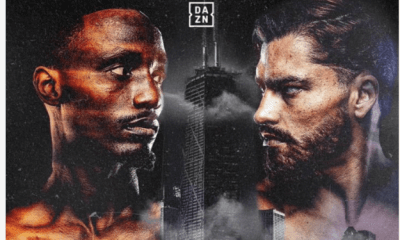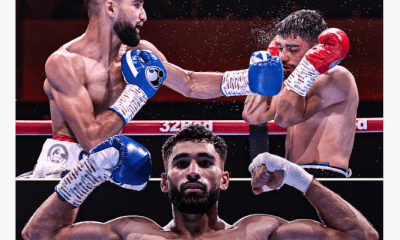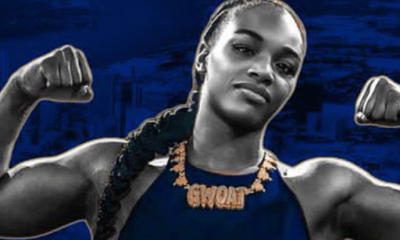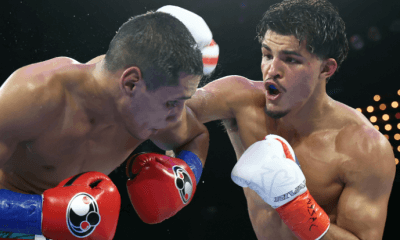Featured Articles
Fast-Rising Bantamweight ‘Cashflow’ Diaz has an Interesting Back Story
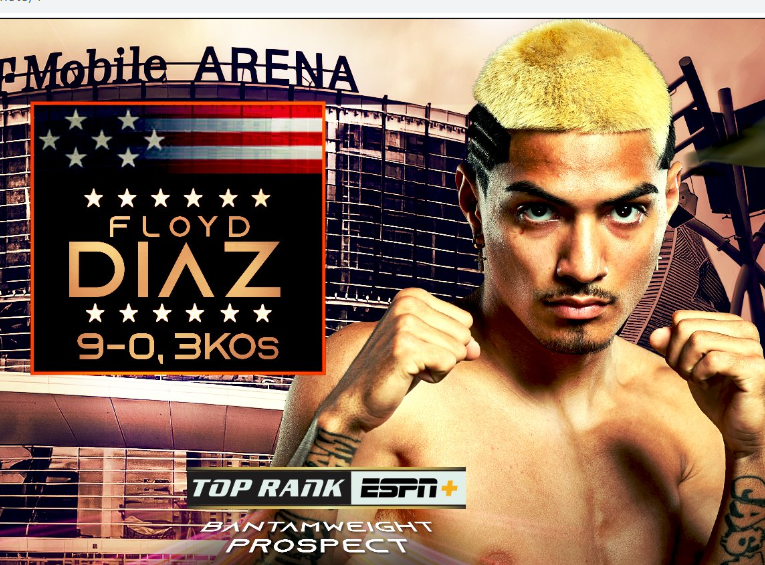
Floyd Diaz Jr, who began his pro career with a ready-made nickname, “Cashflow,” had an unusual childhood. While other boys his age were playing tetherball and such on school playgrounds, he was hobnobbing with boxing royalty. Within the tight-knit Las Vegas community of boxers, no one is held in such awe or commands more respect than Floyd Mayweather Jr and Floyd welcomed young Diaz into his circle when the boy was still in kindergarten.
You may have caught a glimpse of young Floyd Diaz Jr in one of those ”24/7” episodes that HBO used as shoulder programming to promote Mayweather’s fights. Diaz happened to be at the Mayweather Boxing Club when the segment was filmed and found himself in one of the frames. “I was close to all the Mayweathers,” he says. “I went to many parties at their homes.”
Flash forward and Diaz, now 20 years old, is a promising bantamweight prospect with strong connections – J. Prince is his manager and Bob Arum’s Top Rank organization is his promoter – and a 9-0 record that reflects well on the acumen of his backers.
“Cashflow” – the nickname was pinned on him by Floyd Mayweather Jr – wasn’t quite six years old when his father first brought him to Mayweather’s gym. None of the trainers there had any interest in working with a boy so young, but the late Roger Mayweather, Floyd’s uncle, saw something in the precocious Diaz and would eventually take him under his wing. Over the next 12 years, Diaz had 210 amateur fights and hauled in enough trophies to fill every room in his house.
Diaz was born in Las Vegas. His paternal grandparents immigrated to the United States from Peru and settled in the Bronx. Growing up, young Floyd spent long stretches in the Bronx and attended public school there as a ninth grader. Before and after, starting with grade five, he was home schooled (“online schooled” as he phrases it), a situation dictated by his busy amateur boxing schedule.
Although he has never been to Peru, “Cashflow” once gave serious thought to fighting under the Peruvian flag in the Olympics. (Representing the U.S. at the 2024 Summer Games in Paris is out of the question as the lords of amateur boxing in the U.S. are firmly opposed to including any pro boxers in their delegation.) Of late, however, he has had second thoughts. “It would mean changing my style,” he says, “and by then my pro career would be too far along for that to make sense.”
Young boxers often dream of fighting at Madison Square Garden, the self-proclaimed Mecca of Boxing. “Cashflow” has already been there. In his fifth pro fight, he appeared at The Garden on a show headlined by the match between Artur Beterbiev and Joe Smith Jr. His next fight is slated for the T-Mobile in Las Vegas, an arena fast developing an MSG-aura. He hopes to fight at Tokyo’s Saitama Arena someday. In his mind, that would be hitting the trifecta.
The T-Mobile show is Thursday, Nov. 16, the first day of the inaugural Las Vegas Formula 1 Grand Prix, a three-day jamboree that has many of the locals dreading the inevitable gridlock. “Cashflow” meets Max Ornelas in a crossroads fight for intra-city bragging rights. On paper, this is an excellent match-up. Ornelas, a clever boxer, is 15-1-1. The draw on his ledger was of the “technical” variety, the result of an accidental head butt, and the loss to undefeated Hector Valdez, a 10-round split decision, was lambasted as one of the worst decisions of the year by veteran scribe Jake Donovan.
Against Ornelas, the “Cashflow” corner will consist of his father who has been by his side the entire journey, Rafael Garcia Jr, the son of the famous trainer and cut man who passed away in 2017, and Mickey Bey, who briefly held the IBF world lightweight title. Bey, who also works with Jared Anderson, recently joined Team Cashflow and fit right in.
The featured bouts on the Nov. 16 card are title defenses by Shakur Stevenson and Emanuel Navarrete. Shakur, inching up on the pound-for-pound lists, is also managed by J. Prince and he and “Cashflow” have sparred on several occasions.
“I gave him good work,” says Diaz, while noting that Shakur had a significant size advantage. And that may be “Cashflow’s” ace in the hole against Ornelas; that as a Top Rank fighter he has honed his skills against sparring partners of greater merit. “Shakur doesn’t do anything out of the ordinary,” says Diaz, “he just does the basics better than anyone else. I don’t think anyone fighting right now is better at measuring distance.”
Floyd Diaz Jr has two younger brothers. The baby of the bunch, Eli, 10, has also taken up boxing. Perhaps Floyd Mayweather can be induced to invent a good nickname for him.
To comment on this story in the Fight Forum CLICK HERE
-

 Featured Articles3 weeks ago
Featured Articles3 weeks agoResults and Recaps from New York Where Taylor Edged Serrano Once Again
-

 Featured Articles6 days ago
Featured Articles6 days agoThe Hauser Report: Zayas-Garcia, Pacquiao, Usyk, and the NYSAC
-

 Featured Articles3 weeks ago
Featured Articles3 weeks agoResults and Recaps from NYC where Hamzah Sheeraz was Spectacular
-

 Featured Articles4 weeks ago
Featured Articles4 weeks agoFrom a Sympathetic Figure to a Pariah: The Travails of Julio Cesar Chavez Jr
-

 Featured Articles2 weeks ago
Featured Articles2 weeks agoManny Pacquiao and Mario Barrios Fight to a Draw; Fundora stops Tim Tszyu
-

 Featured Articles3 weeks ago
Featured Articles3 weeks agoPhiladelphia Welterweight Gil Turner, a Phenom, Now Rests in an Unmarked Grave
-

 Featured Articles2 weeks ago
Featured Articles2 weeks agoArne’s Almanac: Pacquiao-Barrios Redux
-

 Featured Articles4 weeks ago
Featured Articles4 weeks agoCatterall vs Eubank Ends Prematurely; Catterall Wins a Technical Decision


